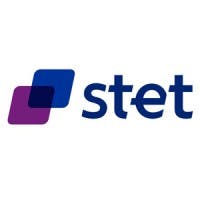STET was created by a group of major French banks to undertake the development of a new platform that would meet the transformation and challenges the payments industry was set to undergo with the standard created according to PSD2.

STET PSD2 API
STET
France / Belgium
The standard has been created according to PSD2 for Account Information Service Providers, Card Based Payment Instrument Issuers and Payment Initiation Service Providers. It provides authentication, authorisation, proof management and fraud detection oriented features.
Crédit Mutuel Arkéa have a developer portal to allow use the PSD2 APIs of ten French banks hosted by Arkéa
ISO 20022
JSON
REST
YAML
Active API
v1.6.3.1 / 6 Oct 2022
PSD2 actors must be registered against an NCA, which could be the French or Belgian NCA or another one. In the latest case, passporting rules allow the actor to operate in the target country.
The information that has been collected must be accessible to other actors in order to provide trust and interoperability. A non-registered actor cannot interact with another actor. Each actor must be provided with at least one eIDAS certificate (QWAC) for TLS 1.2 purposes delivered by a registered Qualified Trust Service Provider (QTSP). The European Commission’s list of QTSPs.
Regulated
Mandated
STET has been mandated by its shareholders in order to design and provide an open API (aka STET PSD2 API) that would specify the different interactions between third party providers (TPPs) and Account Servicing Payment Service Provider (ASPSPs) for carrying out the different use cases of PSD2. This API could be extended to other (non-PSD2) use cases in the future but this extension is not part of the mandate. The PSD2 includes items that have been identified and studied in common with the Berlin Group, in a strategy of convergence of the different European API initiatives.
Banking
Open Banking
-
Account information
-
Payment initiation
-
(Fund availability)
Credit Cards
Current Accounts
Wallets Or Prepaid
Certificates
DCR
Registry
App To App Redirect
Browser Redirect
Decoupled
At any time, the user can edit their consent choices through the Account Information Service Provider (AISP).
There are two consent management models:
1. A full-AISP model, where the Account Servicing Payment Service Providers (ASPSP) does not require to be informed of the details of the user consent.
2. A mixed model, where the ASPSP does require to be informed of the details of the PSU.
CIBA
FAPI1
OAuth
OIDC
The standard relies on OAUTH2 protocols for authorisation. The implementation of authentication is up to each Account Servicing Payment Service Provider (ASPSP).
Accounts
Balances
Beneficiaries
Confirmation Of Funds
Direct Debits
Other
Parties Or Contacts
Standing Orders
Transactions
AIS includes retrieval of account overdraft.
AIS includes retrieval of account overdraft.
Parties info included in AIS Accounts.
Premium APIs are described as PAO / non API use cases.
Bulk Payments
Future Dated Payments
Other
Single Domestic Payments
Single International Payments
Standing Orders
API Specifications
Operational Guidelines
In 2004, with the emergence of the SEPA, STET was created by a group of major French banks with a particular goal in mind: to undertake the development of a new platform that would meet the transformation and challenges the payments industry was set to undergo.
The CORE platform was developed with the ambition to create an innovative payment platform for the future European market. This new platform aimed to deliver efficiency and security to a large-volume market, and to provide the requisite architectural flexibility to handle the diversity that would exist for many years.
CORE was successfully launched in January 2008 with the first SEPA Credit Transfer (SCT) payment and, throughout the year, hosted the migration of the full range of payment instruments in the French market. This was in addition to a national consolidation of the clearing by concentrating all payment instruments in a single clearing system.
In 2012, the technical consolidation approach became a reality when the Belgian banking community entrusted STET with the processing, clearing and settlement of SEPA and non-SEPA payment instruments in the Belgian market.
The implementation of the new Belgian CSM ended in March 2013.
On 18th December 2015, STET merged with Société d’Exploitation de Réseaux et de Services Sécurisés (SER2S), becoming STET SA.
With the addition of this network, STET activities now include strong expertise in cards, as well as the study, design, building and operation of networks and secure interchange and data processing systems, in the context of electronic payment systems.
STET’s approach to governance empowers each client’s community to maintain full control over its Clearing and Settlement Mechanism (CSM). As a consequence, STET clearly separates management of a CSM from the corporation running scheme-agnostic processing capabilities. Each has its distinct governance organisation, ensuring balanced priorities:
-
The Board is responsible for running the corporation. These responsibilities include overseeing the corporation’s strategy, organisation, investments, and future developments.
-
For clearing services, a governing body is designed for each community. This body has full control over payment instruments and rules for processing or routing them. This governing body’s very organisation and governance are decided by each community. Individual banks are also considered as flexible clearing services offer allows clients to opt in our additional services, such as Instant Payment.
-
For card services, STET designed a flexible network and services able to suit market demands.

